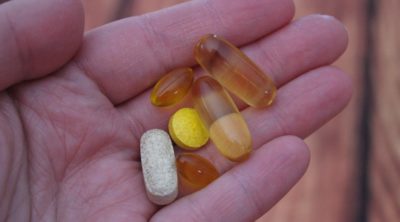
Liquid bandage is designed to heal minor cuts and wounds, and is unlikely to be recommended for deep cuts and large wounds. Read the following WellnessKeen article to know when not to use a liquid bandage.
Did You Know?
Use of liquid bandages is not recommended for infants that are 2 years old or younger.
When it comes to treating minor cuts, cracks, wounds, and abrasions, we often prefer to use a BAND-AID. Instead of using this conventional treatment, a better option is to use a liquid bandage. Applying just one thin coat of the bandage can work wonders to safeguard the wound against infections and speed up healing. Also, unlike a BAND-AID that can be painful to remove, a liquid bandage automatically comes off after a specific duration. However, prior its use, you need to know certain dos and don’ts so as to make it an effective first aid option.
Things to Keep in Mind Before Using a Liquid Bandage
For Topical Purpose Only
Liquid bandage is formulated to be applied on the superficial skin only and not be used inside the wound. If the cut is wide, then firstly, you need to bring the skin edges together. You can use your fingers but that doesn’t mean you squeeze the wound. Once it is done, gently apply it over the entire length of the cut. Once applied, it dries fast―as quickly as 30 seconds. After it becomes dry, there is no need to hold the edges of the wound together.
For Minor Wounds Only
It works well for small cuts and wounds but if the wound size (surface area) is big, you need to talk to a doctor before using the bandage. However, liquid bandages may not be recommended for relatively large wounds and deep cuts. The label on the product also warns against use over large areas of the body. Wounds that are infected or puncture wounds should also not be treated with these bandages. All in all, application of liquid bandages depends on the depth and size of the wounds.
Not for Skin Problems
The liquid bandage is no solution for skin rashes, hives, psoriasis, and even burns that are marked by severe skin damage. Using it for these skin problems is unlikely to provide any relief.
Waterproof
This topical skin treatment is resistant to water, which means a shower will not cause the bandage to come off. However, when having a bath, make sure you do not scratch the affected area, else the bandage will fall off.
No Secondary Treatment
When treating the wound with liquid bandage, there is absolutely no need to use any other topical antiseptic. This can reduce its stickiness or the adhesive bonds that hold the bandage on the skin. So, if you want this bandage to stay on, do not use it in conjunction with other topical treatment.
Avoid Contact With Eyes
In case you are using the liquid bandage on the face, for minor abrasions, avoid touching the eyes during application. In case of accidental contact, immediately wash your eyes with water.
Liquid Bandage Ingredients
The active ingredient in this bandage that keeps the wound safe from infections is an antiseptic. Quite a few brands add benzethonium chloride to impart antiseptic properties to the product. Dyclonine hydrochloride, another active ingredient in these bandages, acts as a topical anesthetic. Hence, its application can also be helpful in pain management of wounds. Inactive ingredients that contribute in making the product effective are given below:
- Castor oil
- Ethyl acetate
- Acetone
- Amyl acetate
- Drometrizole
- Pyroxylin
Usually, a liquid bandage comes off naturally, after a week, as most minor wounds heal during this period. However, in case you notice that the wound is not showing any signs of healing after application, immediately visit your health care provider.


